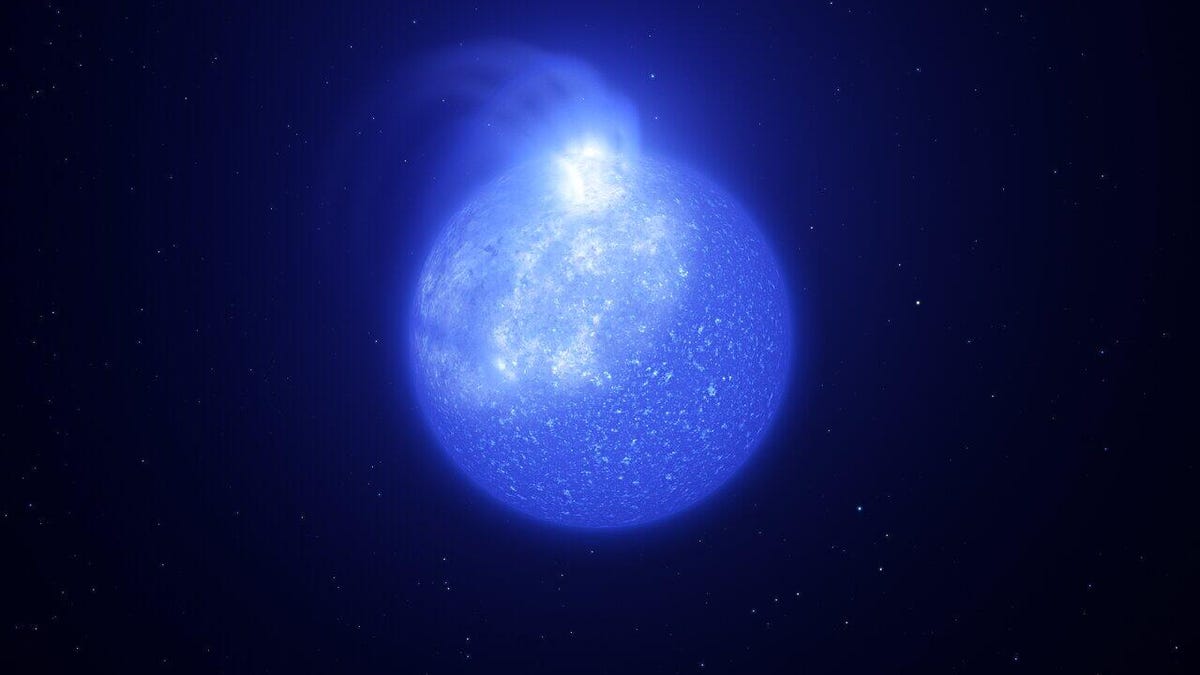Extremely hot stars are plagued by magnetic spots and prone to exploding
Astronomers uncover the unique and wild activity in a class of mysterious, ultra-hot stars.

Giant magnetic spots plague ultra-hot stars.
For over six decades, astronomers have been trying to demystify a class of incredibly hot stars known as extreme horizontal branch stars, around half as massive as the sun, but up to six times as hot. A team of international researchers observing this class of stars have detected surprising, highly energetic outbursts and discovered they are "plagued" by magnetic spots.
The study, published in the journal Nature Astronomy on Monday, utilized a handful of instruments on the Very Large Telescope, which lies in Chile's Atacama desert and is operated by the European Southern Observatory, to study this class of stars. The EHBs are special, because they seem to "die prematurely," according to Yazan Momany, an astronomer at the INAF Astronomical Observatory of Padua, Italy and first author on the paper.
Observing this class of mysterious stellar bodies in three globular clusters (dense, spherical collections of stars) of the Milky Way, the team detected periodic changes in their brightness. One particular globular cluster, NGC6752, was observed for six years and the team studied seven stars within the cluster. The peculiar dips and flares in brightness seemed fairly regular, with some lasting a few days and others several weeks.
Astronomers observed extremely hot stars in the globular cluster NGC 6752 for a period of six years.
The team hypothesize the changes in brightness are due to gigantic, magnetic spots which "plague" the stars. Some of these spots can take up a quarter of the star's surface -- and they result in extremely bright, hotspots. Stars, like planets, rotate -- and so the team think the rotation and the spots are causing the changes in brightness.
"These stars must be plagued by spots," said Simone Zaggia, an astronomer at the INAF Astronomical Observatory and co-author on the paper, in a press release.
A star's magnetic field plays a role in its life cycle and how heat moves around the giant space furnaces. In our own sun, changes in the magnetic field manifest as sunspots. These spots, temporary phenomena that appear as dark regions on the surface, can be seen on the surface of the sun with powerful telescopes and are sometimes accompanied by extremely energetic explosions known as "flares."
The team believe they have spotted signs of these explosive events occurring in the EHBs, too.
"They are similar to the flares we see on our own Sun, but ten million times more energetic," says Henri Boffin, an astronomer at the European Southern Observatory and a co-author on the paper. "Such behaviour was certainly not expected and highlights the importance of magnetic fields in explaining the properties of these stars."
The researchers write the detection comes as a "total surprise" and they are still observing the globular clusters where the stars were found, hoping to further understand their evolution and life cycle.

